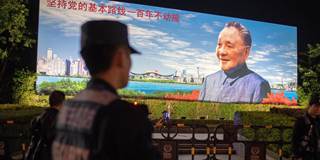The increasingly hardline “America First” approach taken by the US risks strengthening China’s own hardliners, who will push to emphasize national security over continued "reform and opening up." So far, however, President Xi Jinping remains committed to maintaining the pragmatic approach that has guided China for 40 years.
HONG KONG – Earlier this month, at a conference to commemorate the 40th anniversary of China’s “reform and opening up,” President Xi Jinping underscored the tension between the continuation of that process and the imperative of protecting national security. Xi recognized that “China cannot develop itself in isolation from the world, and the world needs China for global prosperity.” Yet he also emphasized that “no one is in a position to dictate to the Chinese people what should or should not be done.”

HONG KONG – Earlier this month, at a conference to commemorate the 40th anniversary of China’s “reform and opening up,” President Xi Jinping underscored the tension between the continuation of that process and the imperative of protecting national security. Xi recognized that “China cannot develop itself in isolation from the world, and the world needs China for global prosperity.” Yet he also emphasized that “no one is in a position to dictate to the Chinese people what should or should not be done.”